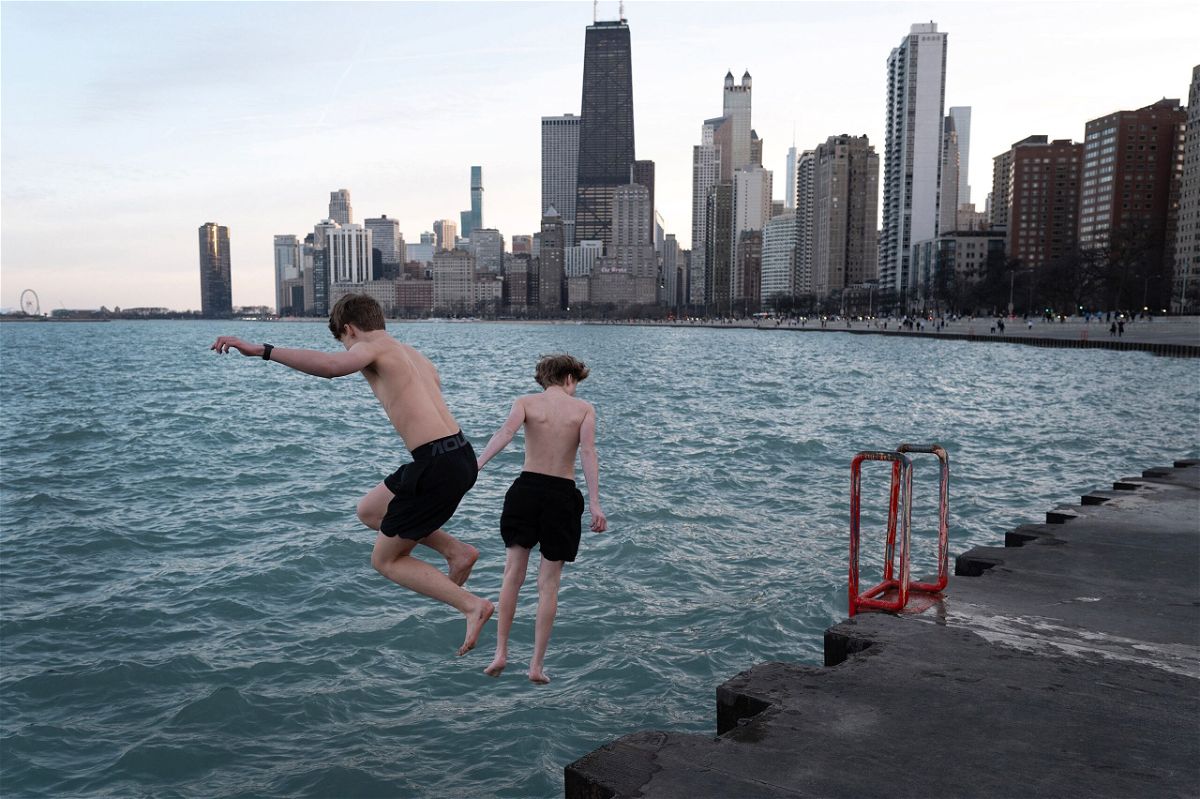Winter is over, and it was the warmest on record. Here’s what the US missed out on this season

By Mary Gilbert and Eric Zerkel, CNN
(CNN) — The final chapter of winter has been written and it’s the story of a season that didn’t live up to its name.
This winter was the warmest on record for the Lower 48, NOAA’s National Centers for Environmental Information said Friday. Records date to the late 1800s.
The record warmth has left vast areas of the country without typical amounts of snow and ice, fueling a worsening drought in the Midwest and disrupting local economies.
It’s another clear signal that global temperatures are on the rise due to human-caused planet-warming emissions.
Five of the 10 warmest winters on record in the US have occurred in the last 20 years as winter has become the fastest-warming season for nearly 75% of the country.
A normal winter was hard to come by, according to an index from the Midwest Regional Climate Center which tracks the aggregate toll of cold and snow at hundreds of locations across the country.
Places with more cold and snow have “severe” or even “extreme” winters as it builds over time, whereas locations with less of both experience mild winters. Dozens of locations have experienced the mildest winter since 1950.
Winter warmth started off at a blistering pace. December was the warmest on record for the Lower 48, a full 7.3 degrees Fahrenheit above average. Aside from one brutal cold spell in January, it continued through the season, with February finishing as the third-warmest on record.
Unusual February heat wasn’t limited to the US. February was the Earth’s hottest on record, marking the ninth month in a row global records tumbled, according to Copernicus, the European Union’s climate monitoring service.
In the US, a classic El Niño pattern had a strong hand in amplifying temperatures, particularly in the Midwest and Northeast where winter felt more like spring.
Eight states experienced a record-warm winter: North Dakota, Minnesota, Iowa, Wisconsin, Michigan, New York, Vermont and New Hampshire.
Temperatures were several degrees above normal in dozens of cities from the north-central US to the Northeast – another clear indicator of exceptional warmth.
More than two dozen other states experienced one of their 10-warmest winters on record. It was also one of the 10-warmest winters for many other cities in the northern half of the US, including the entire I-95 corridor from Portland, Maine, to Richmond, Virginia.
The prolonged warmth still prevented many heavy snow events in the Northeast and Midwest, creating an ongoing snow drought measured in feet of missing snow.
Despite finally ending a years-long wait for substantial snow, New York City and Philadelphia experienced snowfall deficits this winter. It was New York City’s fourth-warmest winter on record and Philadelphia’s sixth-warmest.
Areas downwind of the Great Lakes had some of the greatest snowfall deficits due to a lack of lake-effect snow. Without these robust snow events to bulk up totals, Erie, Pennsylvania, missed out on just over five feet of typical winter snow.
The lack of snow and ice is having a serious impact on small businesses that rely on it to operate, prompting the governors of Michigan and Minnesota to encourage business owners to seek federal assistance through the Small Business Administration.
“From skiing and snowshoeing to winter festivals, snowy winters are part of our way of life in Minnesota,” Minnesota Gov. Tim Waltz said in a news release. “The low precipitation we’ve experienced this winter has had a real economic impact on small businesses that rely on snow and winter tourism to grow and survive.”
Significant snowfall deficits and the unusual warmth are also worsening drought conditions in parts of the Midwest. Severe drought expanded over portions of Wisconsin and Michigan and extreme drought increased in Iowa, according to the latest US Drought Monitor.
The lack of cold air also shattered chances for prolonged, expansive ice coverage across the Great Lakes.
Ice coverage across all five lakes averaged just 5.6% from Jan 1 to March 7, the lowest level since 1973, said James Kessler, a physical scientist at NOAA’s Great Lakes Environmental Research Lab.
“That’s fairly remarkable to say,” Kessler told CNN.
The lakes usually average 29.5% ice cover from January to early March. This year’s deficit means the lakes are missing enough ice to cover an area roughly the size of West Virginia.
The Great Lakes are losing more and more ice as global temperatures rise because of planet-warming emissions. Eight out of the 10 lowest average years for ice coverage have come since 2000, data provided by Kessler showed.
CNN’s Laura Paddison and Allison Chinchar contributed to this report.
The-CNN-Wire
™ & © 2024 Cable News Network, Inc., a Warner Bros. Discovery Company. All rights reserved.